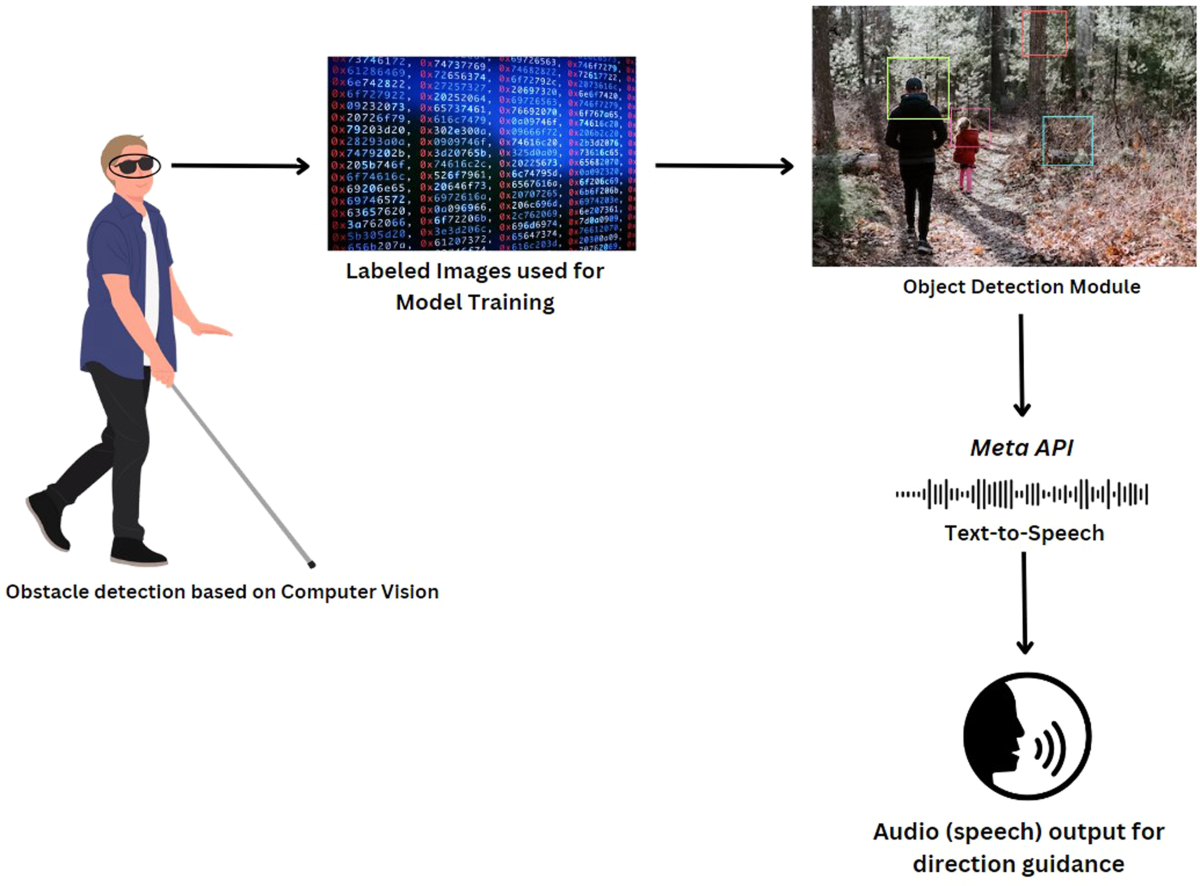The Future of Assistive Technology for the Blind: Empowering Independence
Discover Advanced Assistive Instruments for People With Visual Disabilities
The landscape of assistive innovation for individuals with aesthetic impairments is progressing rapidly, presenting a variety of innovative devices that improve freedom and involvement. From clever glasses that flawlessly merge aesthetic input with auditory advice to sophisticated navigating applications that redefine spatial awareness, these devices are reshaping possibilities.
Smart Glasses Innovations
Smart glasses stand for a considerable improvement in assistive modern technology for people with aesthetic impairments. Equipped with cams and sensing units, smart glasses can capture real-time visual information, which is then refined and conveyed to the individual through sound responses or haptic sensations.
In addition, improvements in man-made knowledge have actually additionally enhanced the abilities of smart glasses. Equipment discovering formulas can recognize faces, reviewed text, and recognize objects, making them invaluable tools for daily jobs. Individuals can receive auditory hints that provide context regarding their environment, promoting freedom and self-confidence.
In addition, the ergonomic design and light-weight nature of lots of wise glasses make them ideal for prolonged use, guaranteeing convenience while improving functionality. As these gadgets proceed to progress, they hold the potential to change the way individuals with visual impairments experience their day-to-days live, bridging the gap in between ease of access and modern technology. The recurring research and advancement in this area assurance to expand the possibilities for clever glasses, making them an important element of contemporary assistive devices.
Navigation Application and Equipment
Numerous navigating apps and tools have become essential sources for people with visual disabilities, significantly enhancing their ability to go across unfamiliar environments. These technologies leverage general practitioner performance, audio hints, and real-time data to supply individuals with exact navigating help.
One noticeable instance is the Aira app, which connects individuals to experienced representatives that can offer visual summaries of surroundings and navigating guidance with a live video feed. This solution enhances the user's spatial recognition and confidence while navigating. One more remarkable tool is Seeing Eye GPS, which supplies voice-guided navigating and sights, allowing customers to accessibility vital information concerning their environments.

As technology remains to advancement, the growth of much more sophisticated navigating tools guarantees to further encourage people with aesthetic problems, promoting smooth flexibility and combination into diverse environments. Such advancements are instrumental in promoting an extra inclusive culture.
Braille Modern Technology Improvements
Over the last few years, innovations in Braille modern technology have actually considerably changed exactly how individuals with visual impairments gain access to information and involve with the world around them. The development of portable Braille screens has actually changed analysis by permitting users to attach wirelessly to computers, tablet computers, and smart devices. These devices transform text right into Braille in real-time, allowing smooth communication with electronic web content.
Furthermore, innovative Braille printers have actually arised, improving the manufacturing of responsive materials. Modern embossers are quicker and extra reliable, permitting for the fast creation of Braille papers and instructional products. This effectiveness reduces the moment and price connected with generating Braille resources, making them a lot more obtainable to companies and schools.
Additionally, the assimilation of Braille with other modern technologies, such as man-made knowledge and artificial intelligence, has opened up new methods for tailored understanding experiences. Voice recognition and synthesis modern technologies can complement Braille, giving a comprehensive strategy to info circulation.
As board of optometry the need for inclusive education and learning and work environment environments expands, these technological advancements play a critical duty in equipping people with aesthetic disabilities, ensuring they have equivalent access to details and opportunities in different aspects of life.
Wearable Devices for Independence
An expanding range of wearable devices is improving self-reliance for individuals with aesthetic impairments, using cutting-edge remedies that enhance navigating and day-to-day living. Braille displays and notetakers. These devices utilize sophisticated modern technologies to provide real-time feedback and support, advertising autonomy in various environments

Wearable modern technology also includes smartwatches that can be programmed with availability attributes, allowing individuals to receive notices, track their places, and even require assistance with the touch of a button. Moreover, some tools integrate synthetic intelligence to evaluate the environment, offering audio descriptions of close-by objects or individuals.
Voice-Activated Assistive Solutions
Leveraging voice-activated assistive remedies has transformed the landscape of support for people with visual disabilities, offering hands-free interaction and accessibility to a range of tasks. These technologies utilize natural language handling and expert system to allow customers to carry out daily activities with easy voice commands.

In addition, current advancements in voice acknowledgment precision have enhanced the customer experience dramatically, suiting diverse accents and speech patterns. This inclusivity guarantees that more individuals can gain from these modern technologies, promoting a better sense of freedom.
Final Thought
To conclude, the advancement of advanced assistive gadgets considerably enhances the freedom and lifestyle for people with aesthetic disabilities. Advancements such as clever glasses, navigating applications, Braille technology, wearable devices, and voice-activated solutions jointly cultivate a more comprehensive atmosphere. These innovations encourage users to navigate their surroundings with confidence and engage more totally with the globe, eventually advertising better ease of access and level playing fields for individuals dealing with visual obstacles.
The landscape of assistive innovation for people with visual disabilities is advancing rapidly, offering a range of cutting-edge gadgets that improve freedom and interaction.Smart glasses stand for a significant advancement in assistive innovation for people with visual disabilities. As these devices continue to develop, they hold the potential to revolutionize the method individuals with visual impairments experience their day-to-day lives, linking the space in between accessibility and modern technology.In recent years, developments in Braille modern technology have actually substantially changed how individuals with visual problems accessibility information and involve with the globe around them. These modern technologies encourage individuals to navigate their surroundings with self-confidence and engage more fully with the world, inevitably advertising higher ease of access and equivalent possibilities for people facing aesthetic obstacles.